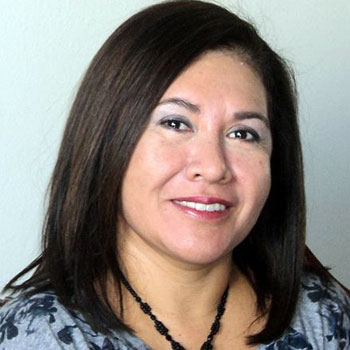
Related article: TRIBUTE TO EDITH ALARCÓN ARRASCUE
For more than 20 years, Edith Alarcon has demonstrated the wide range of contributions that nurses make to tuberculosis control. In both her native Peru and internationally, she is recognised as a technical expert, consultant, teacher and author. Whether training health care professionals or participating in operational research on the use of mobile technology for health, Alarcon’s goal is the same – to see TB patients receive the best care possible and be restored to health.
Alarcon was inspired to become a nurse by her experiences with doctors and hospitals as a child in Lima, Peru. “I saw the work and the love of the nurses and how they treated children and made them forget they were sick,” she says.
She first became involved with TB when she was in charge of public health programmes for a Lima health centre. In the late 1980s, Peru had a high incidence of TB and as many as 50 percent of cases went untreated. “One in four people refused bacteriological examination, and close to half did not finish treatment,” she recalls.
In 1990 the government increased its support for TB, recognising its link with poverty. They restructured the National TB Control Programme (NTP), and, by 1993, when the World Health Organization branded the DOTS (directly observed treatment – short course) strategy, Peru had already implemented the components of government commitment, diagnosis by smear microscopy, standardised treatment, consistent drug supplies and ongoing monitoring and evaluation.
Alarcon was appointed to the NTP’s Lima team in 1992 and advanced to working at the national level by 1994. “The teams were led by doctors or nurses”, she says, “with the nurses playing a fundamental role in finding cases, treating and monitoring patients and management activities.
To help build the capacity of TB nurses across Latin America, the Pan-American Health Organization (PAHO) asked Alarcon to write a guide to implementing DOTS from the nurse’s perspective. She also participated in PAHO missions to assess NTPs across the region.
By 2001, Peru was no longer ranked as one of the 22 high-burden TB countries, and its NTP was considered a model. However, multidrug-resistant TB (MDR-TB) was on the rise there as elsewhere. In what she calls “an important experience in my career”, she helped define and implement the national strategy for managing MDR-TB.
The following year, she was hired as a consultant for The Union serving the Caribbean and Latin American regions. In this role, she has authored or coauthored guides, including the Best practice for the care of patients with tuberculosis: a guide for low-income countries (2007), and taught numerous courses on TB and MDR-TB management with colleague Dr José A Caminero.
As a Union member active in Nurses and Allied Professionals (NAPS) activities, she also helped establish the Latin American Network of NAPS and served on the Board of Directors from 2007 to 2009.
Today she is based at The Union Peru Office in Lima, where her activities include working on Peru’s Annual Measurement Survey of Prevalence and Risk of Tuberculosis Infection; serving on PAHO’s Technical Advisory Group and the Green Light Committee for the Americas Region; and teaching for The Union. Staying abreast of the latest innovations, she is also working with the VOXIVA project piloting the use of mobile technology for supporting TB patients and staff.
In her career, she says, “I never felt that being a nurse had limits. Working for The Union has given me the opportunity to improve the visibility of nursing work internationally and I’ve learned from the realities of other countries and continents”. This has allowed her to become an effective and informed advocate, not only for TB patients, but also for those essential people on the frontlines who care for them day after day.
